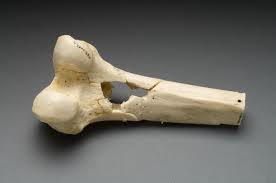
 James Brooks, was born 1838 in Newmarket and resided in town when he enlisted in Company I, 10th Infantry Regiment Massachusetts on 21 Jun 1861. He was promoted to Full 1st Lieutenant on 29 Apr 1862. He then transferred during battle to Company C, 6th NH Infantry. He was wounded and discharged for wounds as a Lieutenant from the NH Infantry on 31 Oct 1862. After he recuperated, he re-enlisted 10 Mar 1864 and mustered in 6 Apr 1864 at age 26 as a Private in Company K, 57th Massachussetts Infantry for 3 yrs (credited to Boston). His re-enlistment in Boston listed his service record as Full 2nd Lieutenant (As of Co. C, 6th NH).
James Brooks, was born 1838 in Newmarket and resided in town when he enlisted in Company I, 10th Infantry Regiment Massachusetts on 21 Jun 1861. He was promoted to Full 1st Lieutenant on 29 Apr 1862. He then transferred during battle to Company C, 6th NH Infantry. He was wounded and discharged for wounds as a Lieutenant from the NH Infantry on 31 Oct 1862. After he recuperated, he re-enlisted 10 Mar 1864 and mustered in 6 Apr 1864 at age 26 as a Private in Company K, 57th Massachussetts Infantry for 3 yrs (credited to Boston). His re-enlistment in Boston listed his service record as Full 2nd Lieutenant (As of Co. C, 6th NH).
He was soon promoted to Full Corporal on 06 Apr 1864 and detached from his company and reassigned as a guard to 1st Division, IX Corps, baggage and supply wagon train during the Battle of the Wilderness 6 May 1864. He was promoted to Full Sergeant on 12 May 1864 for “Bravery In Action” during engagement at Spotsylvania Court House 10 and 12 May 1864.
His Mass military record indicates that he died of disease; however, a case can be made that he actually died due to his wound.
” He was wounded in the left leg by a “minie ball” on 18 May 1864, but the injury was not considered serious at the time. Nevertheless, his wound festered and his leg finally had to be amputated by regular Army surgeon Doctor C. Page on 5 June. Brook’s prognosis was good following the operation, and after sufficient recovery he had been sent to to Depot field hospital at City Point near Petersburg. However, complications set in and the young sergeant died from Typhoid fever on 14 July1864. His officers described him as a “good soldier”.
“The Brave Amongst the Bravest”, Chapter 10, Mother May You Never See the Sights I Have Seen by Warren Wilkinson, Harper & Row, New York, NY. pg 131.
His physical description at the time of his death was 5’8” with hazel eyes and brown. He is listed in Newmarket’s 1860 census as an iron moulder, living with his brother John, a blacksmith, and his parents Benjamin and Sarah Brooks. Both his sisters Sarah and Eliza were teachers, and his older brother Benjamin was an engineer.
In the early 1850s, James Burton of the U.S. Armory at Harper’s Ferry, Virginia, improved further on the Minié bullet by eliminating the need for the iron plug and making it easier and cheaper to mass-produce. It was adapted for use by the U.S. military in 1855.
 During the Civil War (1861-65), the basic firearm carried by both Union and Confederate troops was the rifle-musket and the Minié ball. The federal armory in Springfield, Massachusetts, produced a particularly effective rifle-musket that had a range of around 250 yards; some 2 million Springfield rifles were produced during the war.
During the Civil War (1861-65), the basic firearm carried by both Union and Confederate troops was the rifle-musket and the Minié ball. The federal armory in Springfield, Massachusetts, produced a particularly effective rifle-musket that had a range of around 250 yards; some 2 million Springfield rifles were produced during the war.
 (photos: damage to a femor bone by a Minie ball; and comparing regular rifle balls right, to the Minie ball left.)
(photos: damage to a femor bone by a Minie ball; and comparing regular rifle balls right, to the Minie ball left.)
The long-range accuracy of the Minié ball meant that the traditional model of warfare, when infantry and cavalry assaults could be successful, was over. Soldiers armed with a minié-loaded rifle could hide behind trees or blockades and take down approaching forces before they could get close enough to cause any damage. Weapons of an earlier age, such as the bayonet, became almost obsolete in this new kind of warfare, and the role of cavalry and field artillery was greatly reduced. Casualty figures for the American Civil War reached staggering proportions, with more than 200,000 soldiers killed and more than 400,000 wounded. The rifle-musket and the Minié bullet are thought to account for around 90 percent of these casualties.
(source: http://www.history.com/topics/minie-ball)